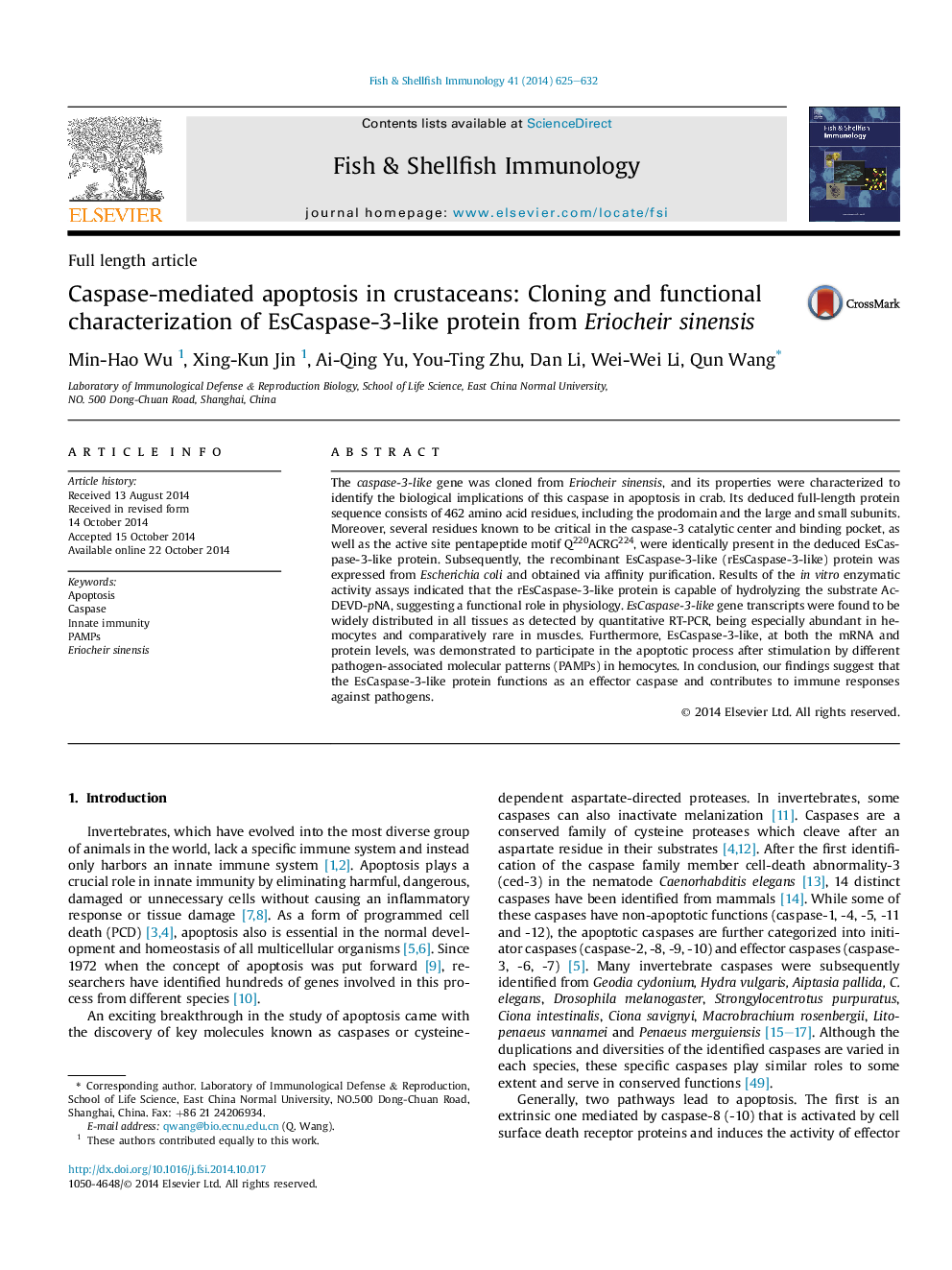| Article ID | Journal | Published Year | Pages | File Type |
|---|---|---|---|---|
| 2430971 | Fish & Shellfish Immunology | 2014 | 8 Pages |
•The predicted Escaspase-3-like protein contain characteristic domain and motif.•The recombinant EsCaspase-3-like protein can hydrolyze the specific substrate.•Transcription of EsCaspase-3-like was detected in all tissues.•Both mRNA and protein levels were significantly increased after stimulation with PAMPs.
The caspase-3-like gene was cloned from Eriocheir sinensis, and its properties were characterized to identify the biological implications of this caspase in apoptosis in crab. Its deduced full-length protein sequence consists of 462 amino acid residues, including the prodomain and the large and small subunits. Moreover, several residues known to be critical in the caspase-3 catalytic center and binding pocket, as well as the active site pentapeptide motif Q220ACRG224, were identically present in the deduced EsCaspase-3-like protein. Subsequently, the recombinant EsCaspase-3-like (rEsCaspase-3-like) protein was expressed from Escherichia coli and obtained via affinity purification. Results of the in vitro enzymatic activity assays indicated that the rEsCaspase-3-like protein is capable of hydrolyzing the substrate Ac-DEVD-pNA, suggesting a functional role in physiology. EsCaspase-3-like gene transcripts were found to be widely distributed in all tissues as detected by quantitative RT-PCR, being especially abundant in hemocytes and comparatively rare in muscles. Furthermore, EsCaspase-3-like, at both the mRNA and protein levels, was demonstrated to participate in the apoptotic process after stimulation by different pathogen-associated molecular patterns (PAMPs) in hemocytes. In conclusion, our findings suggest that the EsCaspase-3-like protein functions as an effector caspase and contributes to immune responses against pathogens.
